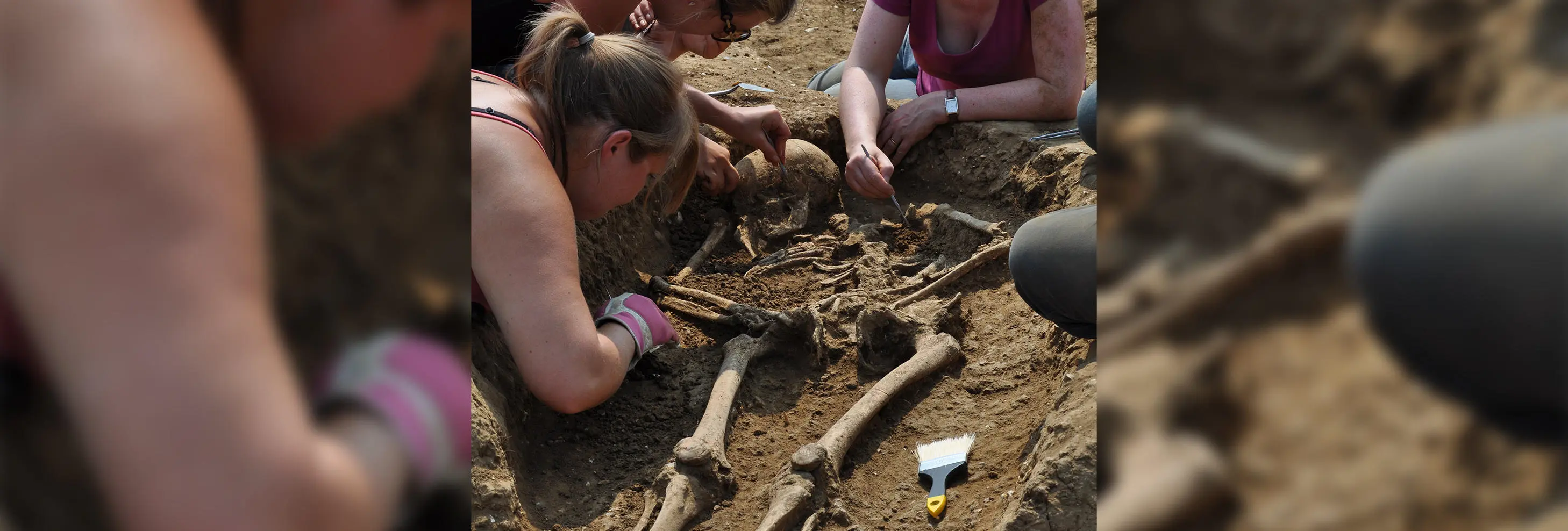About 76 per cent of the ancestry in early medieval English populations originated from northern Germany and southern Scandinavia
Mass migration into Britain across the North Sea from Germany, The Netherlands and Denmark during the Anglo-Saxon period may have increased continental North West European ancestry to 76 per cent in Britain, reports a paper published this week in Nature. The findings suggest that migrations from continental Europe influenced the formation of early medieval British society.
The research, led by Stephan Schiffels from the Max Planck Institute for the Science of Human History and Professor Duncan Sayer from the University of Central Lancashire (UCLan), analysed DNA from 460 ancient north-western European individuals from 37 archaeological sites in England, Ireland, the Netherlands, Germany and Denmark, dated to between approximately AD 200 and 1300.
The analysis found that about 76 per cent of the ancestry in early medieval English populations originated from northern Germany and southern Scandinavia, providing strong evidence for large-scale migration that was part of a continuous movement of people in the North Sea zone during the first millennia. There is also clear evidence of mixing, as evident for example by mixed families within cemeteries such as Buckland near Dover in the South-East.
"These findings give us a deeper insight into the impact of migration into the British Isles after the fall of the Roman Empire and of the associated cultural changes."
— Professor Duncan Sayer, Director of the UCLan Research Centre for Field Archaeology and Forensic Taphonomy
Subsequent demographic events were found to reduce the proportion of continental northern European ancestry and to introduce new components such as southwestern European ancestry, similar to that found in Iron Age France.
“It remains unclear whether this additional ancestry related to Iron Age France is connected to a few punctuated migration events, such as the Norman conquest, or whether it was the result of centuries-long mobility across the English Channel”, said Stephan Schiffels.
"What the research reveals challenges our perceptions of our own past, and for the first time it allows us to explore community histories in new ways."
— Professor Duncan Sayer, Director of the UCLan Research Centre for Field Archaeology and Forensic Taphonomy
Additionally, they found that women with immigrant ancestry were more likely to be buried with grave goods, such as brooches, than women with local ancestry. Whereas men with weapons were just as likely to be native or of immigrant ancestry.
Professor Duncan Sayer, Director of the UCLan Research Centre for Field Archaeology and Forensic Taphonomy, said: “These findings give us a deeper insight into the impact of migration into the British Isles after the fall of the Roman Empire and of the associated cultural changes. It is one of the most difficult areas of British history to explore because of the limited source material, and so this DNA research is critical for our understanding of it.
"What the research reveals challenges our perceptions of our own past, and for the first time it allows us to explore community histories in new ways. This migration was not one event but a made up of families adapting to new circumstances across the regions of Britain.”
The paper is available to read in Nature.

